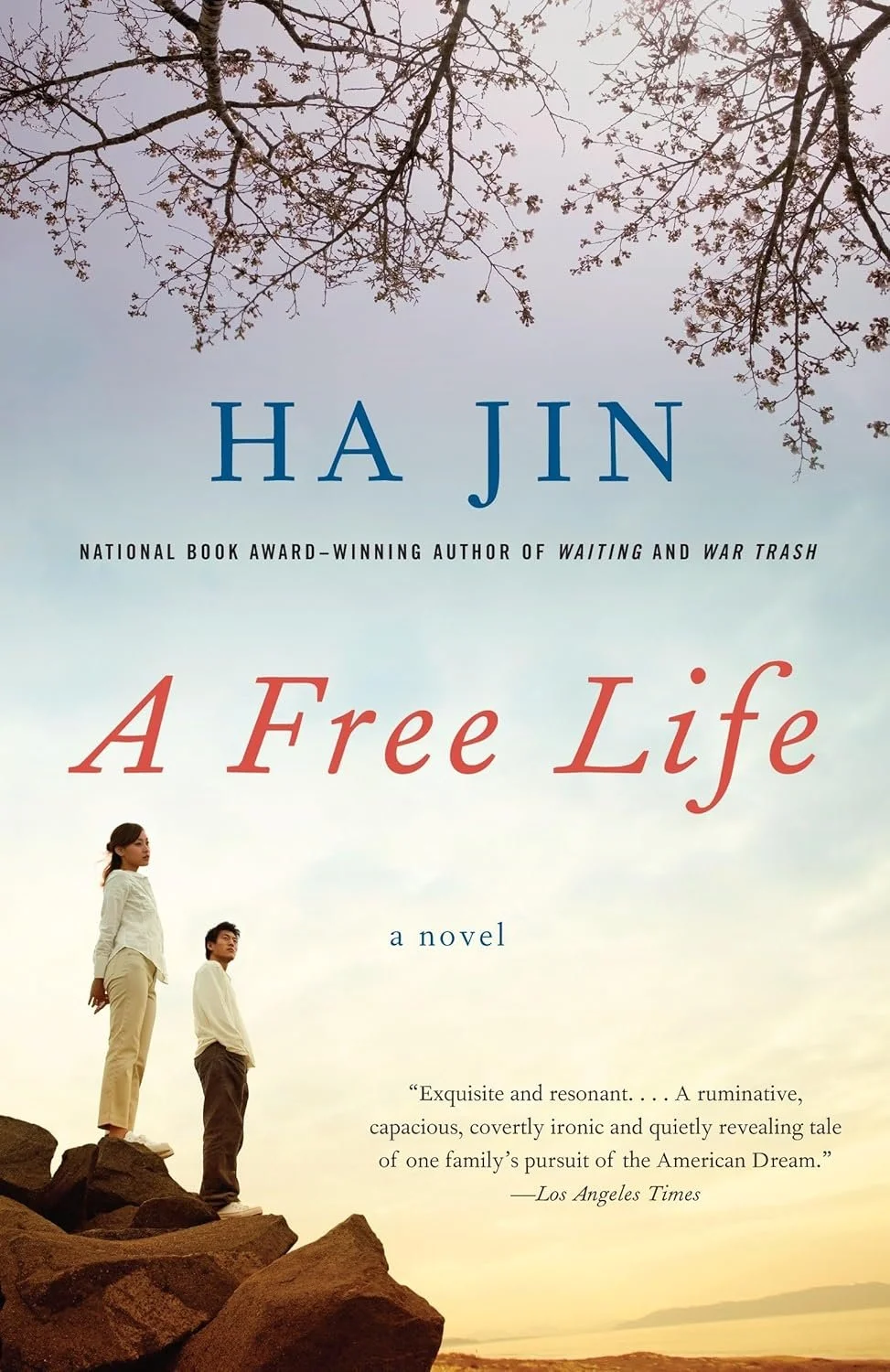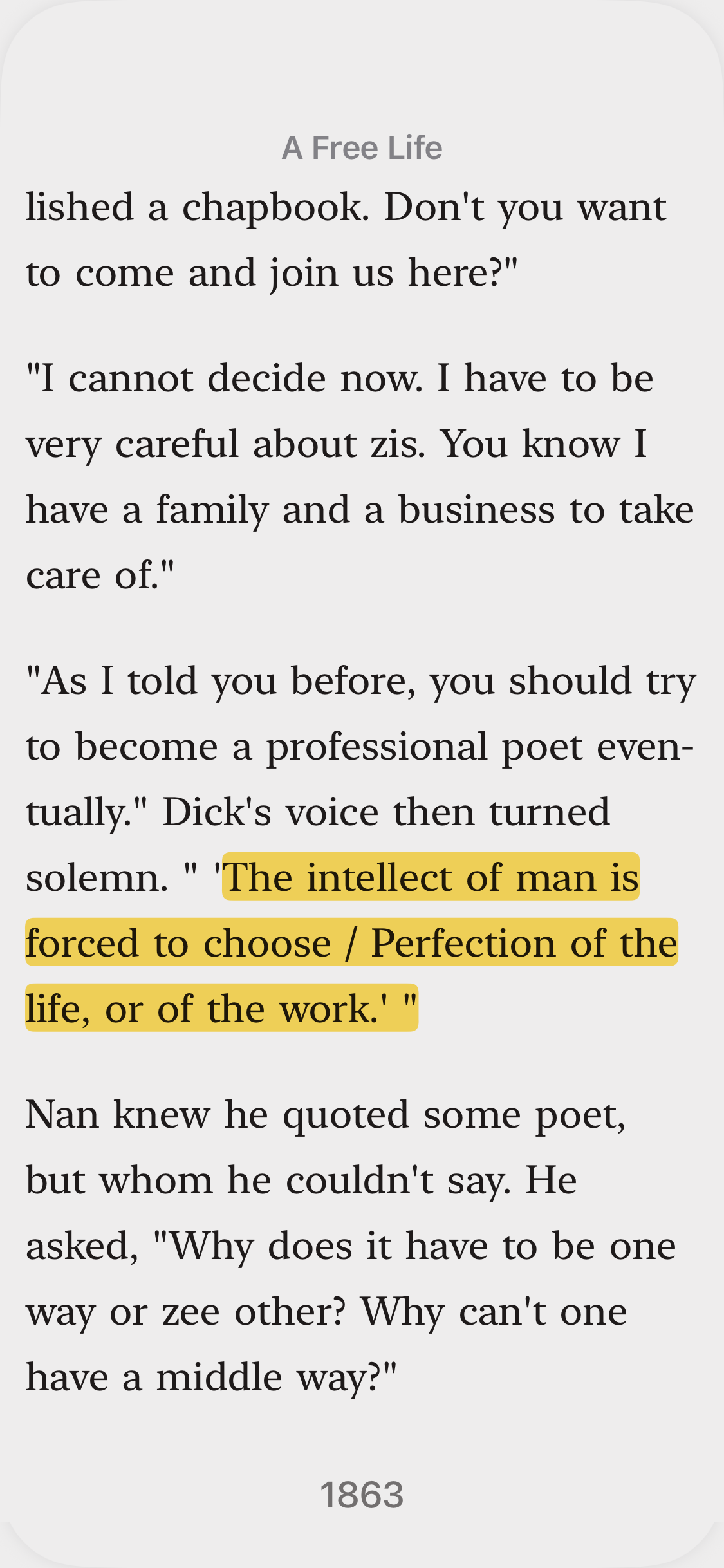Ha Jin - A Free Life
Structurally inventive story of an immigrant’s battle between adapting and maintaining inner purpose.
Ha Jin’s (read Jin Ha in English) book is at first an intimidating 672 pages and the first hundred worried me greatly due to a very unusual writing style. The style would eventually come to define the book and to the greatest degree ensure its success. Essentially Ha writes in a chunked format with each paragraph having a kind of standard start and end which establishes a problem and a resolution. These independent paragraphs at first seem flippant and without gravity yet their stacked order starts to establish a predictable lull which effectively leads you on through the story.
On a larger level, the chapters also follow the same structure with none of the typical western “cliffhangers” used at the end of chapters. There is also no overt action or narrative arc in the traditional sense. On the surface it seems simply as a documentary of the character’s daily life and the various woes and resolutions from day to day. On many occasions I was disappointed that yet again some problem that I’d anticipated would ruin a character was quickly resolved with one sentence.
As I read on, this kind of resolution became comforting and meditative. Why are we conditioned to expect always the worst in novels? All advice suggests that they should be written with “but then…” conjunctions in order to keep the reader involved. While “and then…” is often referred to as the worst way to keep a story going, Ha takes a third tack by using the equivalent of “so it was.”
In a way, this novel reminded me of the epic films of the 60s. They were much longer and had much less action than those of today, but somehow they allowed you to enter into the mood of the story more effectively by kind of leading you by the finger tips as opposed to pushing you by the back.
The sheer amount of daily “chunks” that are written about really give a great sense of the characters and allow you to feel part of their lives, especially the main character Nan Wu who’s internal struggle forms the basis of the story.
Nan is a reluctant family man who has left China after the Tiannemen Square massacre to establish a new life in America. Known as a poet, he has so far failed to find fame or his voice and hopes that a successful integration into American freedom will allow him to write poetry again, this time in English. Through various twists and turns common to everyday life, he diverges from the path of poetry in order to address the requirements of sustaining a living, always with a subtle remorse and worry about losing the ability to write poetry the longer he neglects it.
Various other poets and artists meander in an out of his life, each succeeding or failing for different reasons and each giving a wonderful contrast to Nan’s plight. We not only get to the see the various arguments regarding choosing purity of life or devotion to work, we increasingly align with Nan’s reaction to each event and his eventual conclusion.
CONCLUSION
A Free Life is somewhat unique in its format and prose and successfully uses it to engage the reader. For lovers of writing or poetry, there is much to study here on a linguistic level. For frequent readers, it is a superb “beach book” which fulfills the requirement of being long enough that we rarely worry about it “ending too soon.” It’s a happily relaxed page-turner. Finally for those struggling with the idea of conforming to society in order to survive instead of monomaniacally following their artist vision, there is compelling arguments on every side and a great resolution at the end. I found it invigorating and centering in a similar way to Paterson by Jim Jarmusch. While it may not have the universal appeal to enter into the upper echelons of classic fiction, there is certainly more than a whiff of greatness here.
PRICE
$22.00 USD
AVAILABILITY
THE RATING
7/10 Absolute
8/10 Relative
Your donation helps keep the reviews coming!


